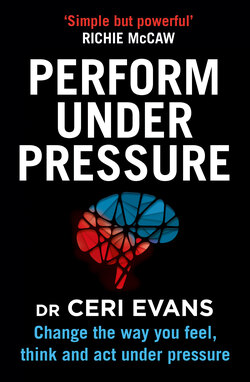Читать книгу Perform Under Pressure - Ceri Evans - Страница 26
How Our Early Years Set the Pattern
ОглавлениеThe way our brain develops in the first two years of life will have a large say in whether we can hold our nerve in high-pressure situations as adults.
Attachment theory is based on the idea that strong emotional and physical attachment to at least one parent or caregiver is essential for early development. This psychological model can help us understand the impact our early years have on our ability to regulate our emotions later in life.
A strong emotional connection between infant and parent allows the infant to retreat to the parent when they are fearful (attachment), but to continue to explore the world if the parent is reassuring and seems unconcerned about the situation (exploration). The key is that the infant reacts to signals that reveal the parent’s mental state.
The interesting thing is that this attachment behaviour is learned without words. It’s a constant process that happens before we can talk, and even before we can move independently. Our parent intuitively matches our emotional state, providing signals through tone, touch and look, with the eyes being the critical connection point.
On the biological front, our brain goes through a massive growth spurt over the first year of life, to more than double in size to weigh over a kilogram. Our brainstem and limbic system are already maturing, with the amygdala – our superbly sensitive threat detectors – fully functional at birth. Our sympathetic nervous system develops in our first year, to give us the energy to engage and explore visually. If bonding goes well, this first year has a very positive impact on the infant, and most interactions are soothing and joyful.
In the second year of life the parasympathetic branch of our ANS matures and connects with our right orbitofrontal cortex. This happens as we’re becoming more mobile and therefore more in need of frequent interventions from our parent to set limits that keep us safe. The signals increasingly come from a slight distance, and largely through face and eye contact.
This is a big change in tone. We’ve become used to mainly positive parental reactions, but now we’re faced with a real mixture of encouragement to explore, and signals to hold back. When we see our parent’s concerned reaction, our anxiety spikes, but our parasympathetic nervous system down-regulates our stress levels and careful matching from our parent restores the connection. When there is a good connection, our parent is said to be attuned to us.
By 18 months, we’ve been exposed to many, many interactions. The right orbitofrontal cortex is providing the final adjustment of the output from our limbic system, regulating our arousal level and emotions up or down.
By the end of the second year, we’ve built up an ability to cope with some fear and stress, and to quickly return to exploring when the situation is safe enough. If it’s not safe, we’re able to quickly seek contact with the parent and come back under emotional control so we can re-energise (a process known as refuelling). We learn to tolerate fear without becoming overwhelmed or lost, and to settle quickly if we do become distressed. This is called a secure attachment.
However, an unhelpful pattern can be set up if the parent is unresponsive, or too responsive, or if their behaviour is inconsistent and the infant is never sure what to expect.
If the parent is too quick to soothe, the infant isn’t exposed to any fear and doesn’t learn any tolerance of stress and discomfort. Over time, the infant will develop a tendency to become agitated, restless and over-aroused.
On the other hand, if the infant is looking for reassurance and it is delayed, or not provided, the infant’s distress increases. If the distress continues to rise, the infant can reach its threshold and suddenly shut down, becoming quiet and still. It learns that help and reassurance should not be expected, so it starts to isolate itself and become lethargic (under-aroused).
Both of these patterns – and a situation where there’s no clear pattern – are called insecure attachments, where the infant’s ability to regulate their emotions is impaired. (A word of caution: no parent can be attentive all of the time, and this is not a platform for judging the quality of our parents – or anyone else’s.)
The quality of the parent–child interaction is more important than the circumstances in which a child grows up. People can be emotionally resilient despite a difficult early family life, while emotional fragility can sometimes emerge from what appears to be a solid family environment.
